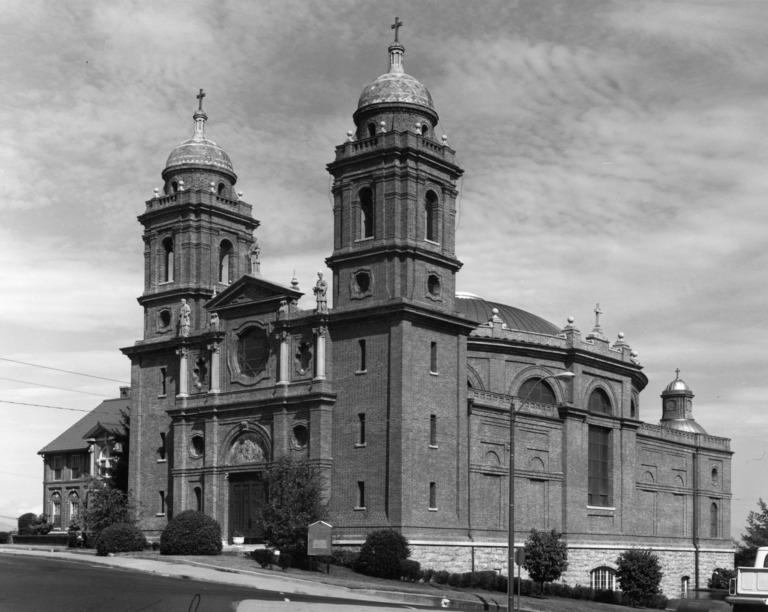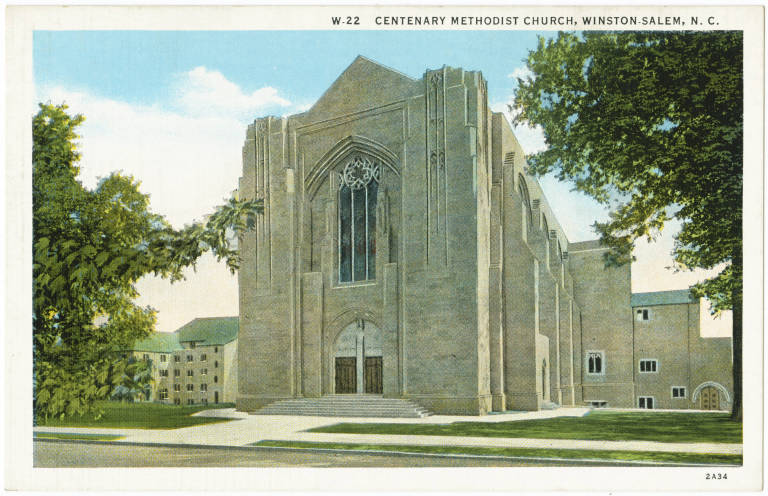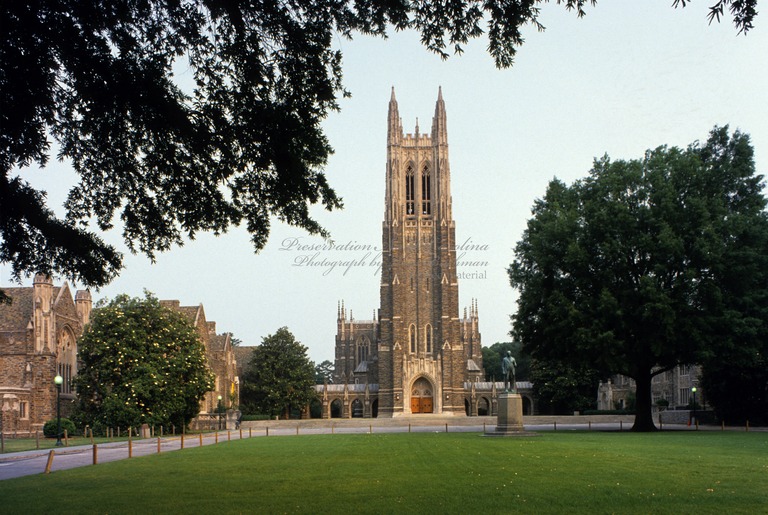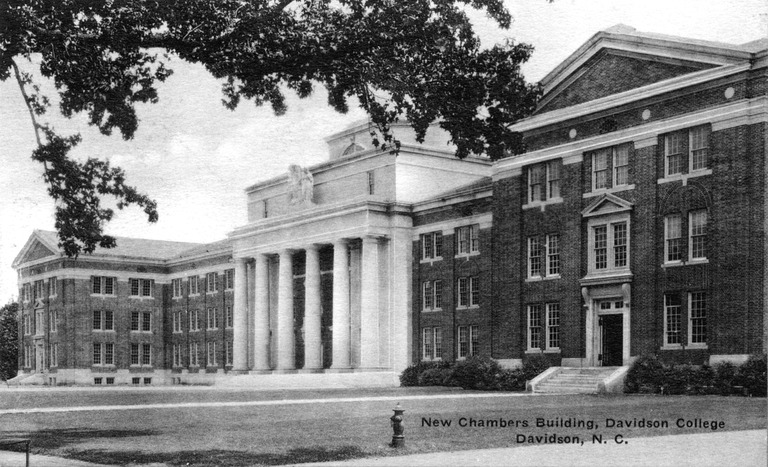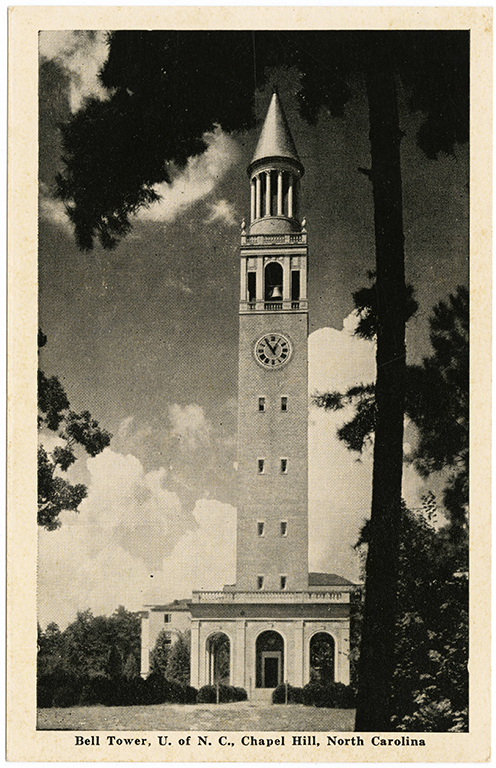Guastavino, Rafael Jr. (1872-1950)
Variant Name(s):
Raphael Guastavino; Jr.
Birthplace:
Barcelona, Spain
Residences:
- Black Mountain, NC; New York, NY; Islip, NY
Trades:
- Architect
- Builder
Building Types:
Styles & Forms:
Spanish Baroque; Gothic Revival
Rafael Guastavino, Jr., was born to Rafael Guastavino y Esposito in Barcelona in 1872. Long overshadowed in the public mind by the achievements of his father, Rafael Guastavino, Sr. the younger man has gained scholarly and public attention in recent studies, which depict an important and prolific national career, including some landmarks in North Carolina. (Although both men generally used the spelling Rafael, the Anglicized spelling Raphael was also widely used). David Madden in the Black Mountain News (November 1, 2017) cited John Ochsendorf’s Guastavino Vaulting: The Art of Structural Tile (2010), and a traveling exhibit (2012-2017), which illuminate Guastavino Jr.’s work in major buildings in various states including North Carolina.
Rafael Guastavino, Sr., a Spanish master builder, architect, and engineer, and his young son, Rafael Jr., arrived in New York in 1881. The elder man established himself with a specialty in tile vaulting, based on Catalan methods, which could span large spaces without requiring wooden supports during construction. His technique, a “Tile Arch System” patented in 1885, produced beautiful, strong, and fireproof vaults and domes. Guastavino vaulting permitted the safe and relatively economical creation of grand spaces that fulfilled the visions of their designers. He won commissions to create the vaulting and domes in many important buildings in New York and elsewhere. A major commission was his work at the Biltmore Estate near Asheville. He also manufactured tile of various types.
Rafael, Jr., worked as an apprentice to his father and mastered the art of tile vaulting. At a young age, he patented a number of techniques and products. During the Biltmore project, the family moved to an estate in Black Mountain, near Asheville. At age 23, Rafael, Jr., was taking on substantial responsibility for the R. Guastavino Company. He also established himself in New York.
The elder Guastavino’s last great work was the Basilica of St. Lawrence in Asheville, which reportedly has the largest elliptical dome in North America. An account of the cornerstone laying in the Asheville Citizen-Times of October 21, 1906, related, “Immediately before the ceremony a beautifully engraved trowel of sterling silver will be presented to Father Marion by R. Guastavino, Jr. Mr. Guastavino . . . is himself an architect of enviable reputation. . . . While his father has been devoting his attention to the construction of St. Lawrence’s church, Mr. Guastavino, Jr., has been in charge of his father’s extensive works,” including large buildings in New York, Boston, Pittsburg and Baltimore.” Rafael Guastavino, Sr., died on September 1, 1908, leaving his son to complete the church, in which the older man is entombed.
Thereafter Guastavino, Jr., continued and expanded the firm’s scope and took on an impressive roster of projects. Among these are the National Cathedral in Washington, D. C. the Nebraska State Capitol, the Boston Public Library, and the Cathedral of St. John the Divine in New York, which is cited as the largest dome ever erected without scaffolding. The records of the Guastavino Fireproof Construction Company are held by the Avery Architectural and Fine Arts Library at Columbia University in New York City.
Guastavino Jr.’s most widely recognized work in North Carolina is the Basilica of St. Mary in Wilmington, which resembles St. Lawrence in its domed, Spanish-inspired design; he designed the building as well as executing its great dome. An account in the Wilmington Morning Star of September 21, 1909 stated that the design of St. Mary’s dome was “an exact replica of the famous dome” just completed at St. John the Divine in New York City by Guastavino, Jr., who was identified as “an eminent young architect who has upset all theories of engineers by erecting the structure with no supports other than its own material of tiling and cement.” The article continued with a detailed description of Guastavino’s construction method.
Other North Carolina edifices that incorporate Guastavino, Jr.’s vaulting, according to John Ochsendorf’s study, are the Maxwell B. Chambers Memorial Building at Davidson College in Davidson; “Duke University Memorial Tower,” presumably Duke Chapel in Durham; Centenary United Methodist Church in Winston- Salem; and the Morehead-Patterson Bell Tower at the University of North Carolina in Chapel Hill. Built just before or during the Great Depression, these were among the state’s major works of their time. All still stand, a testimony to Guastavino’s work as well as their other architects and builders and the institutions that have revered and maintained them. Guastavino’s descendants continued his name for at least three more generations.
David Madden, “Guastavino Jr. was hardly standing in his father’s shadow, Black Mountain News (November 1, 2017).
John Ochsendorf, Guastavino Vaulting: The Art of Structural Tile (2010).
Michael T. Southern and Peter Austin, Rafael Guastavino, Sr., Estate, National Register of Historic Places nomination, 1989.
Basilica of St. Lawrence
Contributors:Samuel I. Bean, stonemason; Rafael Guastavino, Sr., architect; Frederick B. Miles, sculptor; Richard Sharp Smith, architect; Rafael Guastavino, Jr., architect and builderVariant Name(s):St. Lawrence Catholic Church
Dates:1905-1909
Location:Asheville, Buncombe CountyStreet Address:97 Haywood St., Asheville, NC
Status:Standing
Type:Religious
Images Published In:Catherine W. Bishir, North Carolina Architecture (1990).
Catherine W. Bishir, Michael T. Southern, and Jennifer F. Martin, A Guide to the Historic Architecture of Western North Carolina (1999).
David R. Black, Historic Architectural Resources of Downtown Asheville, North Carolina (1979).
Douglas Swaim, ed., Cabins and Castles: The History and Architecture of Buncombe County, North Carolina (1981).Note:Famed Spanish architect-builder Guastavino and Smith worked together on the imposing brick church, where the broad dome and other elements show Guastavino’s unique self-supporting tile construction and other tilework, which he manufactured at his estate near Black Mountain. Guastavino is entombed in the church. Drawings survive in the Richard Sharp Smith Drawing Collection, Asheville Art Museum, Asheville, North Carolina. See http://d.lib.ncsu.edu/collections/catalog?utf8=%E2%9C%93&f[classification_facet]=Richard+Sharp+Smith+Collection&q=St.+Lawrence.
Frederick B. Miles, who like Guastavino and Smith, had come to Asheville to work on Biltmore, was commissioned to carve a stone angel for the basilica. The church was elevated to the status of a basilica in 1993. Rafael Guastavino, Jr., completed the edifice after his father’s death.
Centenary United Methodist Church
Contributors:Mayers Murray and Phillips, architects; Rafael Guastavino, Jr., architect and builderDates:1928-1931
Location:Winston-Salem, Forsyth CountyStreet Address:646 W. 5th St., Winston-Salem, NC
Status:Standing
Type:Religious
Images Published In:Catherine W. Bishir and Michael T. Southern, A Guide to the Historic Architecture of Piedmont North Carolina (2003).
Heather Fearnbach, Winston-Salem’s Architectural Heritage (2015).
Duke Chapel
Contributors:Julian Abele, architect; Horace Trumbauer Firm, architects; Rafael Guastavino, Jr., architect and builderDates:1932
Location:Durham, Durham CountyStreet Address:West Campus, Duke University, Durham, NC
Status:Standing
Type:Religious
Note:The signature building of the University, the chapel is noted for its 210-foot tower, capped with Indiana limestone, which dominates the campus and is visible for miles. The interior Memorial Chapel, honoring the founding family and containing the sarcophagi of Washington, Benjamin N. and James B. Duke, was added to the original plans. Rafael Guastavino, Jr., is credited with the interior vaulting.
Maxwell B. Chambers Memorial Building
Contributors:Henry C. Hibbs, architect; Rafael Guastavino, Jr., architect and builderDates:1924-1929
Location:Davidson, Mecklenburg CountyStreet Address:Davidson College Campus, Davidson, NC
Status:Standing
Type:Educational
Note:After the original Chambers Hall burned in 1921, construction began on its replacement in 1924, and the south wing was completed in 1925. The cornerstone for the remainder was laid in 1928, and the project was finished in 1929 and dedicated in 1930. See http://sites.davidson.edu/archives/encyclopedia/chambers. Rafael Guastavino, Jr., is credited with the interior vaulting.
Morehead-Patterson Bell Tower
Contributors:William M. Kendall, consulting architect; McKim, Mead and White, consulting architects; T. C. Thompson, architect; Rafael Guastavino, Jr., architect and builderDates:1930-1931
Location:Chapel Hill, Orange CountyStreet Address:University of North Carolina at Chapel Hill Campus, Chapel Hill, NC
Status:Standing
Type:Memorial
Images Published In:M. Ruth Little, The Town and Gown Architecture of Chapel Hill, North Carolina, 1795-1975 (2006).
Note:The Chapel Hill Daily Tar Heel of February 12, 1931, carried a long description of the bell tower, for which the contract had recently been awarded to T. C. Thompson Brothers. It noted the interior of the first-level arcade would have “a finish of Guastavino tile vaulting.”

